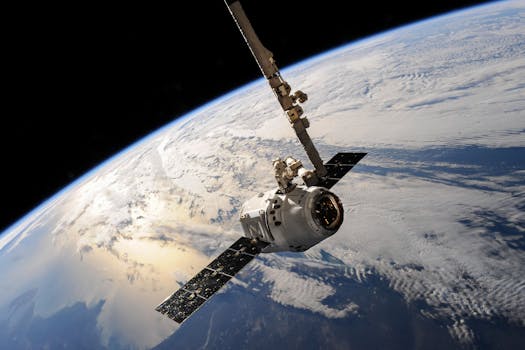
MEO Satellites: Revolutionizing Global Communication with Medium Earth Orbit Technology
MEO satellites, or Medium Earth Orbit satellites, are a type of satellite that operates in an orbit between 2,000 and 36,000 kilometers above the Earth’s surface. This orbit is higher than Low Earth Orbit (LEO) satellites but lower than Geostationary Orbit (GEO) satellites. MEO satellites are designed to provide global coverage and are used for a variety of applications, including navigation, communication, and Earth observation.
The use of MEO satellites is becoming increasingly popular due to their ability to provide faster and more reliable connections compared to traditional GEO satellites. MEO satellites have a lower latency than GEO satellites, which means that they can provide real-time communication and data transfer. This makes them ideal for applications such as video conferencing, online gaming, and cloud computing.
How MEO Satellites Work
MEO satellites work by transmitting and receiving signals to and from Earth-based stations. They are equipped with transponders, which are devices that receive and re-transmit signals. The signals are transmitted to the satellite through an uplink, and the satellite then transmits the signals back to Earth through a downlink. MEO satellites can be used for a variety of applications, including broadband internet, mobile communications, and navigation.
One of the key benefits of MEO satellites is their ability to provide global coverage. Because they are in a higher orbit than LEO satellites, they can see a larger portion of the Earth’s surface, which means that they can provide coverage to a wider area. This makes them ideal for applications such as global navigation and communication.
Applications of MEO Satellites
MEO satellites have a wide range of applications, including navigation, communication, and Earth observation. They are used for applications such as GPS, satellite radio, and broadband internet. MEO satellites are also used for Earth observation, providing images and data on the Earth’s surface and atmosphere.
In addition to these applications, MEO satellites are also being used for a variety of other purposes, including search and rescue, weather forecasting, and disaster response. They are also being used for scientific research, providing data on the Earth’s climate, oceans, and land surfaces.
Benefits of MEO Satellites
The use of MEO satellites provides a number of benefits, including faster and more reliable connections, global coverage, and lower latency. They are also more resistant to interference and have a higher signal-to-noise ratio than LEO satellites. This makes them ideal for applications that require high-speed and reliable connections, such as video conferencing and online gaming.
In conclusion, MEO satellites are transforming the way we communicate globally, offering faster and more reliable connections. Their ability to provide global coverage and lower latency makes them ideal for a wide range of applications, including navigation, communication, and Earth observation. As the demand for global connectivity continues to grow, the use of MEO satellites is likely to become increasingly popular.